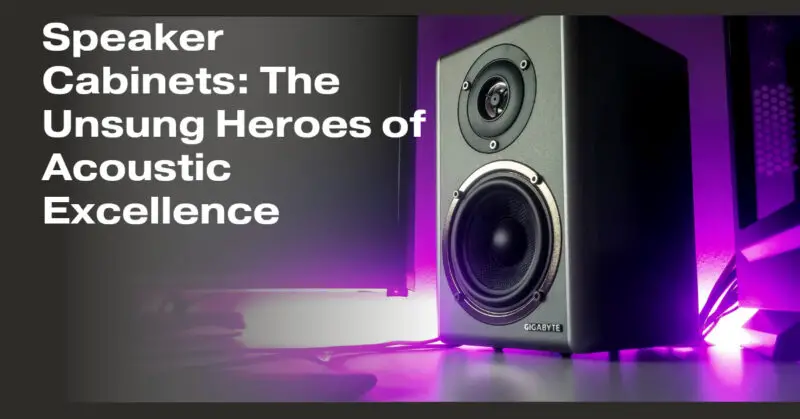When we think about high-quality audio equipment, our minds often gravitate toward advanced speaker drivers, precise crossovers, and powerful amplifiers. While these components are undoubtedly crucial, one often overlooked element plays a pivotal role in delivering acoustic excellence – the speaker cabinet. In this article, we shine a spotlight on speaker cabinets, exploring their significance, design principles, and impact on sound quality.
1. Enclosure Types:
- Closed Box (Sealed): Sealed enclosures are airtight and provide precise control over the speaker’s movement. They deliver accurate bass response but often require more power for deep bass.
- Ported (Bass Reflex): Ported enclosures use a tuned port or vent to enhance low-frequency output. They can produce deeper bass with less power but may sacrifice some precision.
- Bandpass: Bandpass enclosures are a combination of sealed and ported designs, with a sub-chamber that isolates and reinforces specific frequencies. They can be highly efficient but are less common.
- Transmission Line: Transmission line enclosures use a long, folded internal path to improve bass extension and reduce distortion. They offer a compromise between sealed and ported designs.
2. Cabinet Materials:
- MDF (Medium-Density Fiberboard): MDF is a common choice for speaker cabinets due to its density and cost-effectiveness. It provides a sturdy and non-resonant structure.
- Plywood: Plywood is known for its durability and resistance to warping. It’s often used in high-end speakers to reduce resonance.
- Real Wood Veneer: Some premium speakers feature real wood veneer finishes for aesthetic appeal. While beautiful, they may not provide the same level of resonance control as other materials.
- Composite Materials: Advanced composite materials, such as carbon fiber or laminated glass, are used in high-end speakers to achieve both rigidity and minimal resonance.
3. Cabinet Design Principles:
- Bracing: Internal bracing or reinforcement structures are added to minimize cabinet vibrations, preventing unwanted resonance that can color the sound.
- Damping: Damping materials, like foam or constrained layer damping, are used inside the cabinet to absorb vibrations and reduce cabinet-induced coloration.
- Cabinet Shape: The shape of the cabinet plays a role in controlling internal standing waves. Irregular shapes or internal dividers can help reduce resonant modes.
- Cabinet Size: The size of the cabinet influences the speaker’s bass response. Larger cabinets generally produce deeper bass, while smaller ones are more compact but may require more power.
4. Impact on Sound Quality:
- Resonance Control: A well-designed cabinet minimizes its own contribution to sound coloration, allowing the drivers to reproduce audio faithfully.
- Bass Extension: The cabinet type and design significantly affect a speaker’s bass response. Ported cabinets can extend low-frequency output, while sealed designs offer precision.
- Imaging and Soundstage: Cabinet design can influence the speaker’s ability to create a realistic soundstage and accurate imaging. A non-resonant cabinet can provide a cleaner canvas for sound.
- Efficiency: Cabinet design can impact a speaker’s overall efficiency and sensitivity. Properly designed cabinets can make the most of the available power.
5. The Marriage of Cabinet and Driver:
A speaker’s cabinet is carefully engineered to complement the drivers it houses. The driver and cabinet interact in a way that influences the speaker’s overall performance. A synergy between these elements is essential for acoustic excellence.
In conclusion, while speaker cabinets often go unnoticed, they are the unsung heroes of acoustic excellence. Their design, materials, and construction directly impact a speaker’s sound quality. Audiophiles and audio enthusiasts should consider the importance of speaker cabinets when evaluating and choosing audio equipment to ensure a well-rounded and satisfying listening experience.


